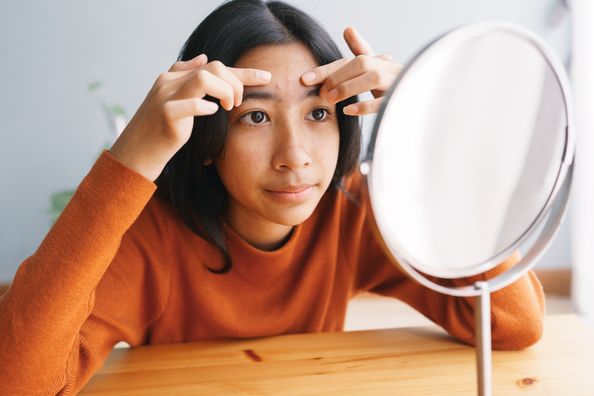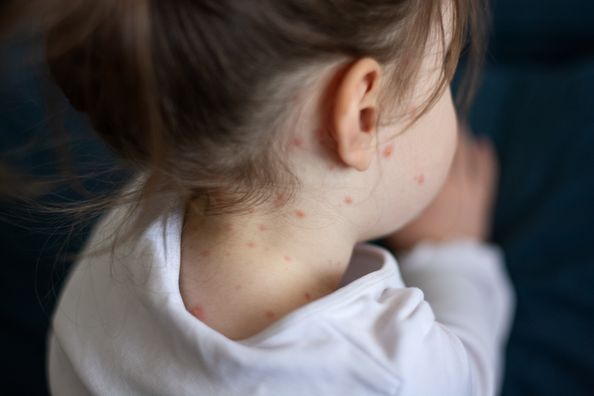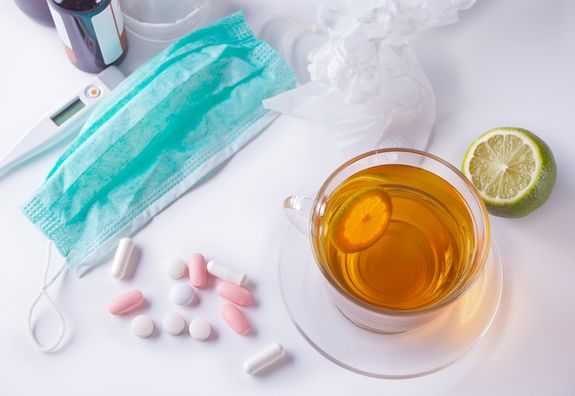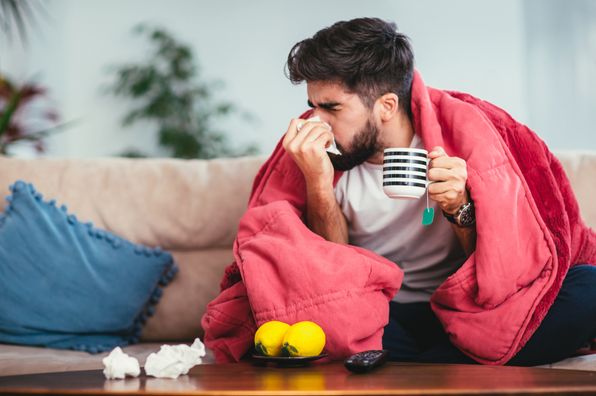What are the symptoms of acne?
- Acne skin lesions are characterized by seborrhea, scaly skin lesions
- Comedones, consisting of black and white heads are the direct cause of sebaceous glands getting clogged with sebum, which is a naturally occurring oil in the skin
- Papules or “zits” that apply to small red lesions
- Pustule lesions with white heads
- Nodule or cystic acne consists of large, red-raised lesions
What are the different types of acne?
Pediatric acne refers to the presentation of the disease before age 11, and adolescent acne refers to acne from age 12 through adulthood.
Neonatal acne
Consists of red papule or papulopustular lesions on the face (cheeks, chin, eyelids, and forehead). This self-limiting problem resolves in 1 – 3 months, occasionally up to 12 months.
Infantile acne
More common in boys than girls and is less common than neonatal acne. It usually starts between 3 – 6 months of age and mostly involves face and cheeks and is more like regular acne with comedones and occasional nodules and cysts.
Mild childhood acne
In general, this form of acne is rare and presents in children 1 – 6 years of age and it may indicate high androgen levels. Therefore, adrenal gland disorders should be ruled out.
Preadolescent acne
This is when acne presents between ages 7 and 11 and may be the first sign of pubertal maturation. The lesions are usually comedones in the T‑zone of the face (across the forehead, on and near the nose, and on the chin).
Adolescent acne
The most common skin problem, affecting 15% of individuals of all ages and 85% of adolescents. This usually continues into adulthood, but decreases in intensity or disappears.
Severe acne that causes large nodules, also called cystic acne, can cause scarring and pigmentation. The psychological impact of acne on individuals, especially adolescents, can lead to reduced self-esteem and, at times, depression. Therefore, early and aggressive treatment can decrease the overall long-term impact.
What can cause acne?
- Genetics — it tends to have a familial predisposition
- Hormonal — increased hormone activity during puberty, menstrual cycle and use of anabolic steroids can aggravate or cause acne
- Infectious agents P. acne and staph epidermis have been frequently discovered in acne lesions, but they are not yet certain to be the sole cause of acne
- A diet high in sugar and excess consumption of milk is believed to worsen acne, but chocolate and salt are not supported by evidence.
What are acne treatment options?
There are many different treatments for acne that are all based on normalizing the shedding of the top layer of the skin and preventing the blockage, including:
- Antiseborrheic medications
- Antibiotics and retinoids
- Antiandrogenic medications
- Keratolytic soaps
Your dermatologist can diagnose the type of acne and provide you with the appropriate treatment. Our dermatologists treat patients of all ages, from pediatric dermatology to adult acne and beyond. Schedule an appointment with our board-certified dermatologists.
Health Topics:







